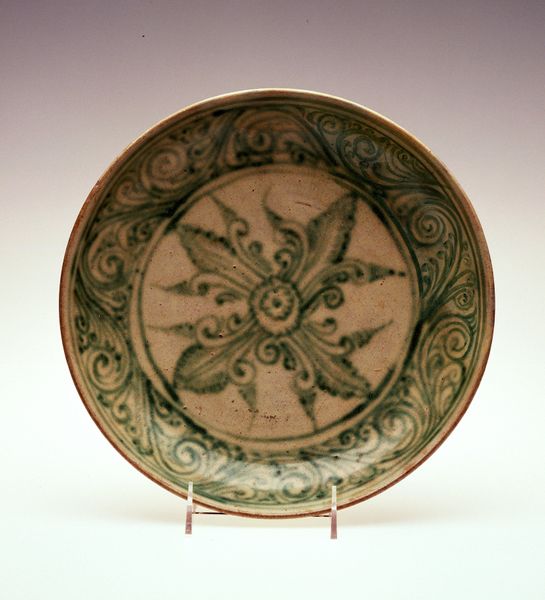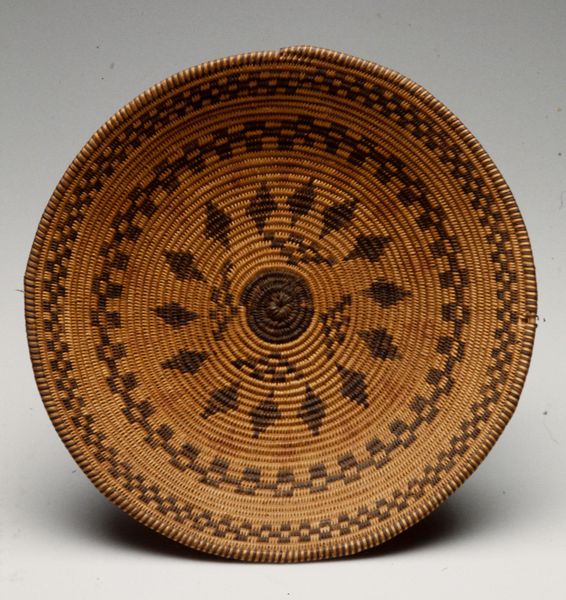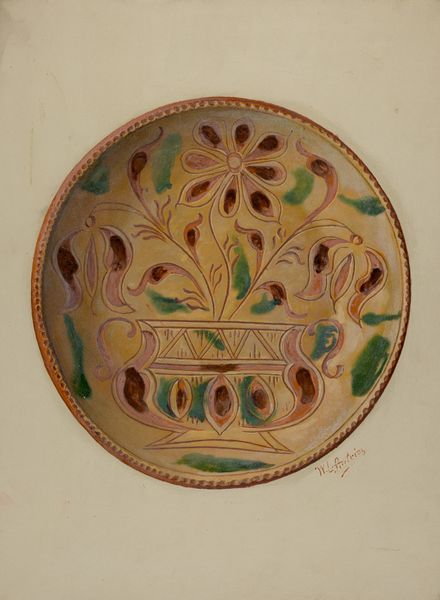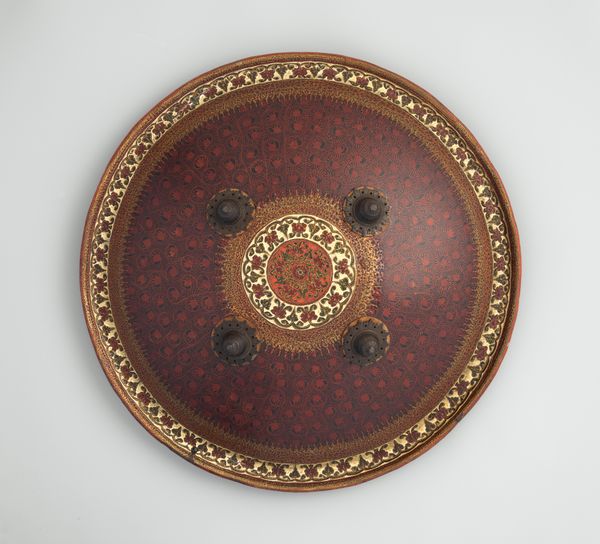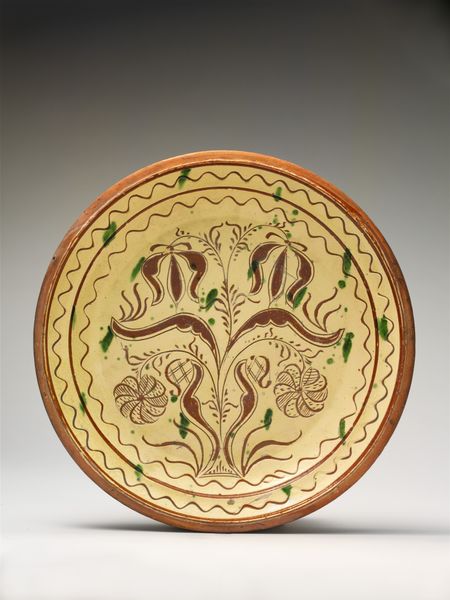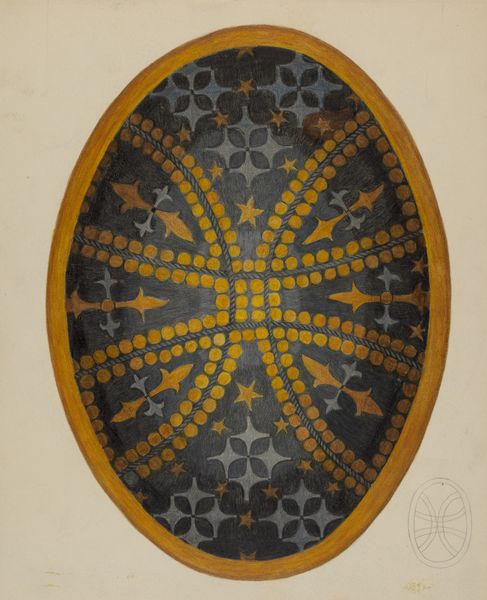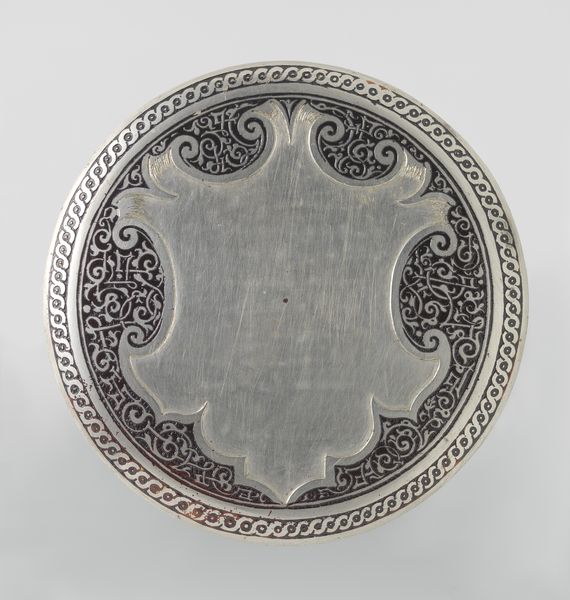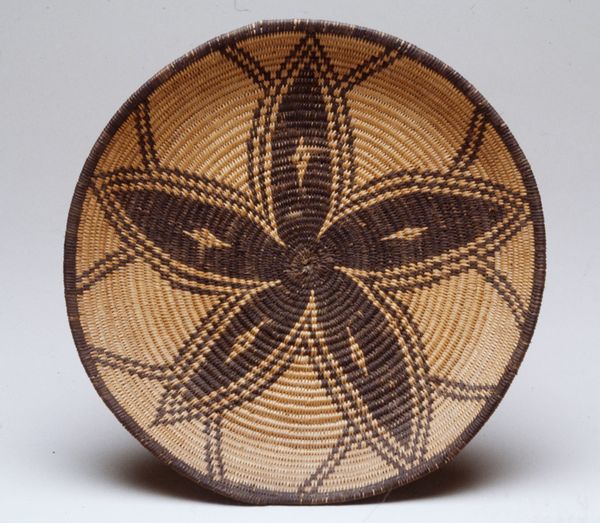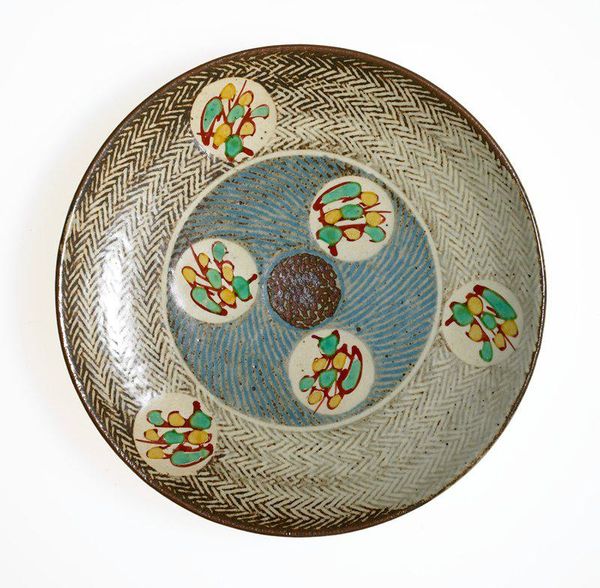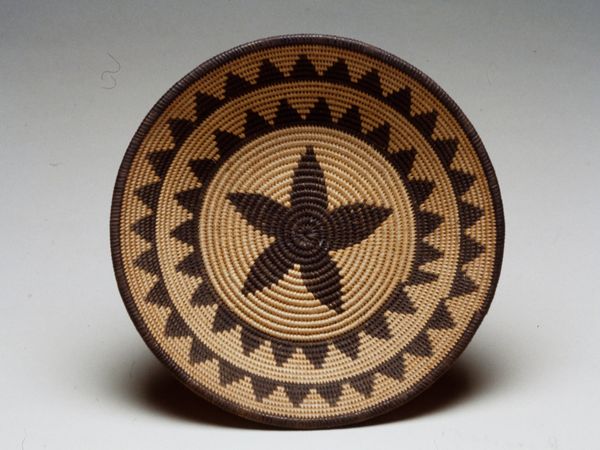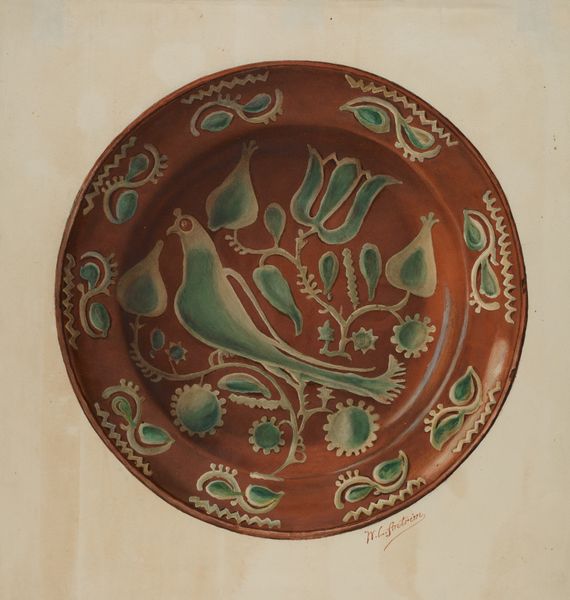
drawing, ceramic, watercolor, earthenware
#
drawing
#
ceramic
#
watercolor
#
earthenware
#
folk-art
#
ceramic
#
earthenware
#
decorative-art
#
decorative art
Dimensions: overall: 40.8 x 30.2 cm (16 1/16 x 11 7/8 in.) Original IAD Object: 1 3/4" high; 9 3/4" in diameter
Copyright: National Gallery of Art: CC0 1.0
Curator: We're looking at a piece titled "Pa. German Dish" by Aaron Fastovsky, dating back to approximately 1941. It combines earthenware and watercolor in its creation. What are your initial thoughts? Editor: It feels deliberately simple, almost childlike, despite the meticulous detail in the designs around the edges. You know, the drawing itself brings out so many tones through texture, particularly with those ceramics. Curator: Absolutely. The motifs reflect classic Pennsylvania German folk-art. Think about the central star; in this context it suggests both divine guidance and perhaps a connection to nature and agricultural cycles, key to that culture's identity. What do the shapes and decoration convey to you? Editor: Well, seeing this type of work made me consider how ordinary materials gain special social value by turning domestic materials into something with high detail through art. Look closely at those tulips and the dotted textures: How many hours did that all take to create? Curator: And it would’ve taken great care to hand-paint earthenware, considering how fragile such a piece could have been. The patterns here do reflect continuity; these types of objects created strong personal ties with the past, and it also strengthens that community's relationship with the natural world. The tulip, for instance, commonly appears representing faith, hope, and charity. Editor: Right. Plus, earthenware dishes were ubiquitous. Think about where this sat: center table, ready for meals or displayed at church sales or festivals...these are common goods, handmade and sold amongst everyday people. Curator: True, it makes you wonder about the stories told around it. In those settings, images like the star become both comforting reminders of spiritual values but are, at the same time, expressions of a shared heritage. What kind of stories might they contain about family, beliefs, and resilience? Editor: Looking at "Pa. German Dish", I recognize the power of materials that are not traditionally “high art," as objects produced are just as revealing as art history. Curator: Yes, its quiet insistence on heritage speaks volumes about resilience and tradition. Editor: Definitely leaves you thinking about utility, labor, and communal meanings.
Comments
No comments
Be the first to comment and join the conversation on the ultimate creative platform.
